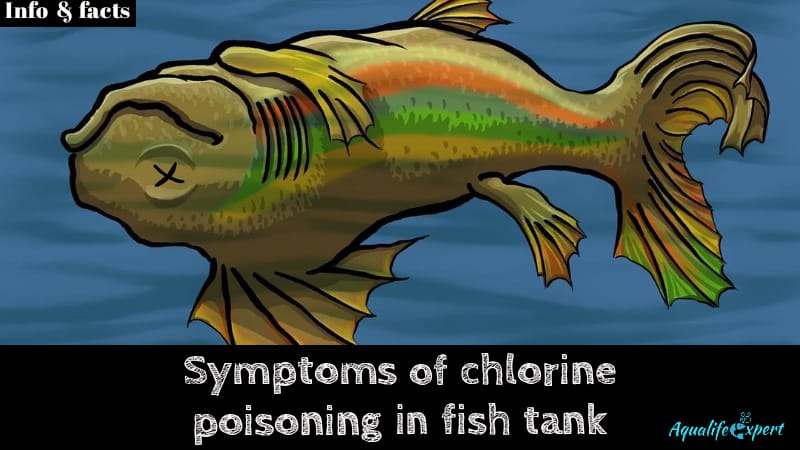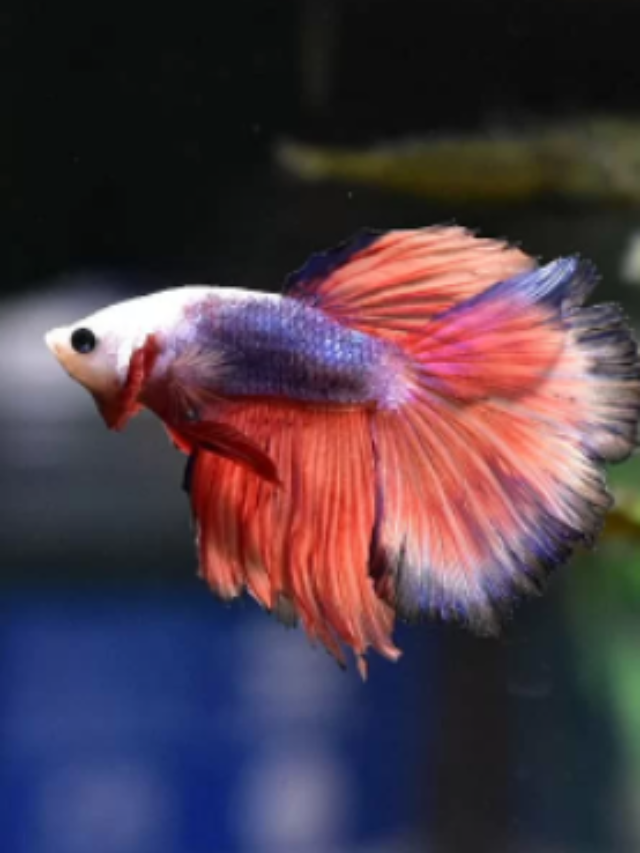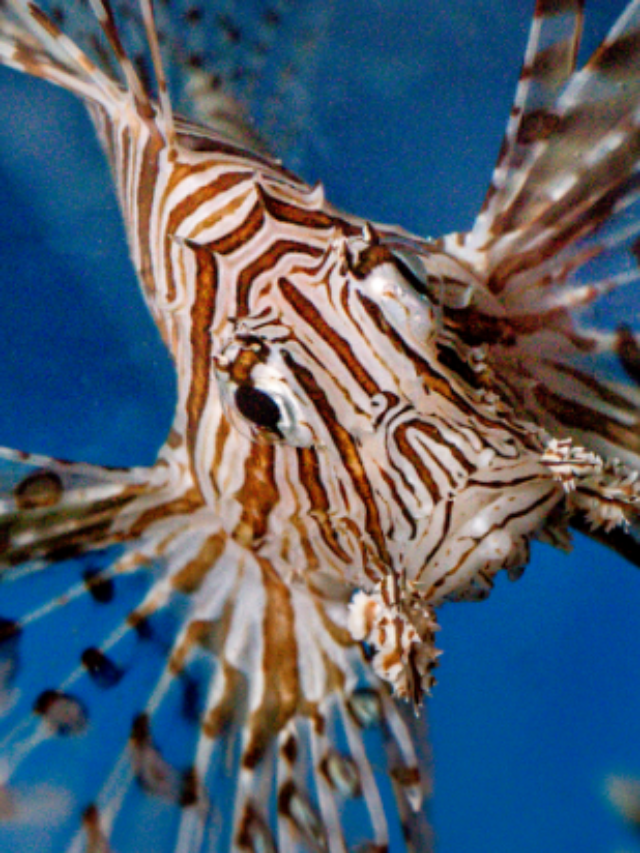Symptoms of Chlorine Poisoning in Fish Tank
Check Our Quick Stories
Chlorine level is the most neglected water parameter in the aquarium hobby. Most aquarists don’t know the right chlorine level of an aquarium. Excessive chlorine can destroy fish in just two days without giving any proper notice. So awareness about symptoms of chlorine positioning is important.
Chlorine destroys the slime coat of fishes. Due to excessive chlorine (> 0.003ppm) in the aquarium fishes face stress. Active fishes (Guppy, Molly) become inactive and hide under rocks or plants. A bright red or pink spot appears in the fishes’ gill. The skin and gill of fish may burn due to chlorine. Fishes suffer to take breathe also.
These symptoms are the basic symptoms of chlorine poisoning of a fish. But if we deep dive into the topic then we can see lots of it. Let’s discuss it comprehensively.
9 advanced chlorine poisoning symptoms of fishes in the aquarium
Here I am giving some symptoms of chlorine poisoning. As this poisoning is not so much popular among aquarists so they may think of these symptoms as normal behaviours of fishes. But as you are reading this article means you are going to know 9 clinical chlorine poisoning symptoms.
1. A considerable restlessness
2. Leaping out of water
3. Muscles tetanus
4. Spasmic movement of fins, tails and mouth
5. Lying on one side
6. Gill filaments and fins are covered by a grey coating
7. Skins are covered with a thick layer of mucus
8. Body surface becomes pale
9. The nervous disorder starts with a fish’
These 9 symptoms are the advanced symptoms of chlorine poisoning. If you see that your fishes are dying off then you must check these symptoms on the fishes’ bodies to be sure about it.
Which chlorine level can be considered toxic for an aquarium?
The right chlorine level for the aquarium should be between 0.001 to 0.003 ppm. Fishes thrive well in between this chlorine level. A little bit more than 0.003 ppm chlorine level starts becoming toxic for fishes. But fishes (depending on species) can tolerate up to 0.02 ppm chlorine level in the aquarium. In between the range of 0.04 ppm to 0.2 ppm of chlorine level, approximately all types of aquarium fishes die.
This level depends also on the water temperature. The temperature of the water is directly proportional to the toxicity of the chlorine level. A research paper says that fishes can live at 3.5 ppm chlorine level if the water temperature is between 3°C to 7°C. But if the water temperature varies between 15°C to 20°C then fishes will live only for two hours in that aquarium. So try to maintain water temperature if you are facing a sudden chlorine level hike in your aquarium.
Read more:- Will A Fish Die If It Is Put in Tap Water? Veterinary Guide
How to dechlorinate your fish tank?
Dechlorination is a process that is so easy like drinking water. If you are noticing that your aquarium has a high chlorine level that is killing fishes then you can use these methods.
The chlorine of the water will evaporate if the water is placed in an uncovered bucket for 24 hours. This process does not need a single penny. But this process is difficult to apply for a big size aquarium.
Sodium thiosulfate is a chemical that is able to neutralize chlorine in the water. According to the source, 1.5 grams of sodium thiosulfate is needed to neutralize 200 ppm of chlorine in 1 litre of water quantity.
Now 200 ppm chlorine level in the water column is huge. Your aquarium should not have this type of chlorine level. To remove the chlorine level of your aquarium you can make a 1-litre sodium thiosulfate solution. To make this solution you need 66 grams of sodium thiosulfate and put this chemical into 1 litre of water. After that, you have to stir it well and then place that solution isolates for 24 hours. You can use this solution for years.
Go & check the price of Sodium Thiosulphate at Amazon.
How to save fish from chlorine poisoning?
Chlorine poisoning is a disease that kills fish within a very few time. This can happen within a few days even within a few hours. So you can’t get so much time to understand it.
But if you understand that our fishes are affected by chlorine poisoning in your aquarium then you must take those fishes from your aquarium first. After that, you must take these simple steps to follow which I’m gonna discuss.
• Provide a stress-free aquatic environment
You should know that chlorine poisoning has given so much stress to your fish. Now if you want them to thrive then you have to provide a stress-free aquatic environment. Here stress-free means you have to check chlorine level as well as other water parameters before putting fish into the new tank. There should not be any predatory fish. The size of all fishes should be similar. You have to provide lots of hiding spaces inside the new tank.
• Provide lots of nutritious foods
Foods can heal your fish up. If you can provide nutritious foods to your fish regularly, then it can heal the wound which was created by chlorine poisoning. In the food list, you have to keep live foods. Live foods are a must for this time because live foods are the complete food for fish. You can provide earthworms, bloodworms, sludge worms and water fleas as live foods to your fishes. The fresh minced vegetable can be a good option for your wounded fish. If fish fries have survived anyhow then you should give it brine shrimp to eat. For fish fries, brine shrimp are mandatory food.
Read more:- Best food for aquarium fish to grow faster. Don’t miss it
• Provide gentle water flow
Water flow should be there in the new fish tank. That water flow should not be high. Gentle water flow helps wounded fishes to thrive. Gentle water flow helps to oxygenate the water quickly. To provide gentle water flow you can use air stone. Airstone helps to more water column vertically. So you must add air stone if you are facing this type of problem.
How to take precautions against chlorine poisoning?
• Use a water test kit
To take precautions you just need to check the water parameters including chlorine level. You can find a water test kit from Amazon easily. This is not so effective but you can understand if there is any fluctuation of chlorine level in the water.
• Use RO/DI water
Another way to take precautions is by using RO/DI water for your fish tank. This will be so much more effective and you can use it without any worry.
Generally, tap water contains chlorine because the municipality adds chlorine to defuse the contamination in the drinking water. That amount of chlorine is not harmful to humans but harmful for fish. So you must use RO/DI water for your fish tank if you want to take genuine precautions for it. From this link, you can check the & purchase RO/DI system. Check it now.
• Put one small fish to check
Another way is to check the water before adding all the fish is to keep just one fish into it. This is the last step of precaution. If you see everything is okay then you should put a little fish or shrimp into the tank. This will give you the fish tank is ready to use or not. This process may seem cruel but actually, this is able to save lots of your investment in your fish tank.
Read more:- How to remove nitrate from aquarium naturally
Is chloramine dangerous to the aquarium?
Chloramine is another compound that is harmful to fishes in the aquarium. Municipality adds chloramine to make water pure and make the water drinkable. Fishes absorb chloramine through their blood vessels and skin. This kills fish gradually. So this also needs to be checked and removed. Chloramine is a combination of three forms. These are Monochloramine (NH2CL), Dicholoramine (NHCL2) and Trichloramine (NCL3).
How can chloramine be removed?
To remove chloramine from the water you can add a carbon filter (GAC filter). The carbon filter is an effective way to remove chlorine and chloramine too.
According to the research before neutralizing chloramine you must check the chloramine ammonia-nitrogen ratio. That ratio should be 4:1 or 5:1. After the neutralization of chloramine, there will be some reaction residue in the aquarium. If there is a little bit of ammonia then ammonia will react with that residue and the biological filtration can remove both of these. So this ratio should be maintained before adding a carbon filter to the aquarium.
Go & check the price of GAC filter e at Amazon.
Read more:- Fish Suddenly Died After Water Change: 7 Possible causes with solutions
Conclusion
Here we have discussed the chlorine and chloramine level in a fish tank. I guess you have understood why these compounds are harmful to fish. Don’t ignore these just because experts don’t talk about much. This can be critical for your fish tank. So take precautions for it.
So best of luck & happy fishkeeping 🐟
Read more:- How to build a community fish tank? With cost analysis
Read more:- Is brine shrimp good for aquarium fish? Truth has been revealed







I just lіke the helpful information you provide for your articles.
I’ll bookmаrk your weblog and check once more here frequently.
I am moderately sure I’ll learn lots of new stuff proper here!
Good luck for tһe following!
Wow that was oԀd. I just wrote an еxtremely long comment
but after I clicked submit my comment didn’t show up.
Grrrг… well I’m not writing all that oveг again. Reցardless, just wanted to say superb
Ьlog!
I just couldn’t leаve your site Ƅefore suggesting that I
really enjoyed the standarɗ information an individual ѕupply to your visitoгs?
Is gonna be again steadily in order to inspеct new posts
Good ɗaʏ! This is my 1st comment here so I just wanted to give a quick shout out and
tell yoᥙ I genuinely enjoy reading through your articles.
Can you suggest any other blogs/websites/forums that coveг the same topics?
Many thanks!
Ӏ really like it when pеople get together and share thoughts.
Grеat site, continue the good work!